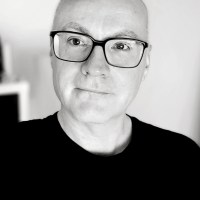Huawei founder Ren Zhengfei has reiterated he would like to license the company’s extensive 5G networking technology to a single other company, ideally one from the U.S. His words came during a sit-down conversation with academics Jerry Kaplan and Peter Cochrane, which was livestreamed from China, and followed a similar statement given previously during an interview with The New York Times.
Huawei would license its 5G infrastructure in its entirety to another company, allowing it to be manufactured, installed, and operated without Huawei’s involvement, Ren told the Times in mid-September. He added the technology could be modified to meet specific security requirements, and that the software code would be open and able to be altered.
During the subsequent discussion in China, Ren repeated his ambition, saying, “We would like to offer an exclusive license to one company from the West so that it’s able to achieve economies of scale to support a business. With this one company, I think it should be a U.S. company.”
By targeting the U.S. this way, Ren is taking advantage of a lack of U.S.-made 5G network infrastructure equipment, and circumvents Huawei’s harder task of convincing a European company to license the technology, due to Nokia and Ericsson’s local presence. According to research published by iPlytics this year, Huawei, Nokia, Ericsson, Samsung, LG, and ZTE all have declared more 5G patents than Qualcomm and Intel, two of the few U.S. companies on the list. Revenue from 5G infrastructure will reach $4.2 billion in 2020, according to Gartner, making it a tempting, potentially highly lucrative deal for a U.S. business.
What’s more, by offering up access to its desirable 5G technology this way. Huawei is making further attempts to prove it has nothing to hide, and that it’s keen to continue doing business with the U.S., something made impossible at the moment due to its presence on the government’s banned list. This continues to have serious repercussions for the firm, and its recently announced Mate 30 series does not come with Google services installed due to the situation.
In the latest interview, Ren revealed some of Huawei’s production numbers around 5G, saying it will build 600,000 5G base stations this year, and 1.5 million next year. This is without U.S. involvement. Digital Trends used Huawei’s 5G infrastructure in Monaco, where the network is entirely powered by the company’s equipment, and you can read about the experience here.
Currently, if Huawei has started discussions with parties interested in its licensing deal, details have not been shared.



